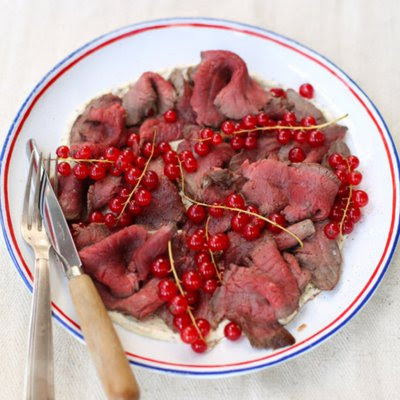AFTER TYING THE KNOT WITH HER SWEDISH SWEETHEART, FOOD PERSONALITY RACHEL KHOO MOVED TO STOCKHOLM
By Carol Kraal




STRICTLY PRIVATE about discussing her personal life, Rachel Khoo’s eyes light up when it comes to food, and her new discoveries in Sweden. She enjoys Sweden’s work life balance, and the fact that the locals literally shut work out of their heads in the summer and head for holiday cottages and seaside fun.
Rachel has “become Swedish” – lighting candles for breakfast because of the dark, and enjoying fika (coffee and cake breaks) with kanelbullar (cinnamon buns); relishing pink pickled onions and crunching on knäckebröd, although she loathes fish roe paste that comes out of a tube.
She realised how cooking in Sweden needed to be resourceful and creative because of the short produce growing months, when sunshine gives way to arctic darkness.
To understand Nordic food better Rachel contacted chef Magnus Nilson of Fäviken restaurant and worked for free, cooking, washing dishes and “scrubbing loos”.
When I messed up the reindeer-blood tartlets the pin drop silence was 10 times worse than someone shouting at you.”
British-born with a Malaysian Chinese father and Austrian mother, the pretty food enthusiast is well known for The Little Paris Kitchen television series, in which she not only cooks things in her galley-sized kitchen but is often sketching and colouring everyday things in her notebook. She has always wanted to do something creative after graduating with a BA in Art & Design at Central Saint Martins College of Art and Design in London, but it was her stint at Le Gordon Bleu in Paris, where she earned a diploma in pastry, that the food bug caught on.
The Little Paris Kitchen TV and cookbook went on to become such hits that a whole slew of shows and cookbooks followed, the latest being The Little Swedish Kitchen. She writes well, penning recipes she discovers and experiments with; and chronicling her life in Sweden with a lot of humour and verve.

A CHAT WITH RACHEL KHOO, FOOD WRITER AND TV SHOW PERSONALITY
England, France, Australia, Malaysia, Singapore, Sweden…the world. You’ve been all over the place. What’s the best way of discovering the “REAL” food of a country?
It really helps if you can ask or get a local to take you somewhere or, even better, invite you into their home. Some of the best meals I’ve had are in people’s homes as those are the dishes that don’t end up being served in restaurants. They are usually the well kept secrets.
What advice from your mentors at Design College (Central Saint Martins College of Art and Design) and Food College (Le Cordon Bleu) stays with you till today?
CSM – it’s not necessary the execution that is important but more to have the initial idea. You can always hire the right skilled worker but you can’t hire someone to create an idea like you do. It’s your individual and your unique sense of perceiving the world and translating it into something creative that will set you apart.
LCB – work quick, work clean.
What are you favourite kitchen tools?
A good quality sharp chefs knife – the best investment you can make. A heatproof silicone spatula, perfect for stirring in hot foods as well as folding in delicate souffles. A microplane grater, good to grate spices like nutmeg as well as hard cheeses.
Kids today have no idea about produce and farms and seasons. How would you teach your own kids, and kids in general, about the food we eat on this planet?
Through everyday eating. I cook with the seasons so it comes naturally. Simply communicating why we’re eating certain things. I also have to take my children food shopping and I point out why we can’t have strawberries in the middle of winter and why we’re picking out certain ingredients versus others. It’s amazing what children can understand if you just take the time to explain it to them.
How do you relax, and what food do you crave for after a hard day at work?
After a long day I love running a hot bath, making a cup of tea and reading a good book in the bath tub with a couple of squares of chocolate – Tony’s chocolate is my favourite. They are slave free.
I’ve now filmed two seasons of Zumbo’s just desserts (on Netflix) – a dessert making competition show where I’m a judge with Australian pastry chef, Adriano Zumbo. All I crave after filming that is a big bowl of steaming broccoli drizzled with extra virgin oil and sprinkled with sea salt.
I do have a soft spot for a good cheese board with some fresh fruit and a few slices of rye knäckebröd (Swedish crispbread).
What advice can you give a student who wants to be a successful ‘Food Creative’ like you?
Persist, work hard and take risks. I’ve been doing that my whole career and still do this today.
.
Story by Carol Kraal. Photographs courtesy of Rachelkhoo.com, Penguin Michael Joseph copyright David Loftus, and Food Netwok



The famous Swedish meatballs, probably Sweden’s biggest culinary export. Even my cousins in Singapore went all the way to Ikea to eat them, such is their culinary reputation…”

What delicious Swedish food is coming out of your kitchen this time of the year?
With the darker days being filled with candlelight it’s important to cook food that warms not only your cold fingers but the soul. It can be a comforting bowl of yellow pea soup which has a dollop of sweet and spicy mustard on top (oh so Swedish). I love this soup as it’s super easy to make in advance (it also keeps super well in the freezer, making it perfect for those lazy days when you can be bothered to cook).
Or a one pan dish of rich creamy stewed spinach where you poached eggs until the whites are cooked and yolks are runny. You garnish it with a spicy tangy chilli herb to give it a bit of a kick and serve with some crunchy buttered toast. Simple but very satisfying (all the ingredients are things you most likely have in your freezer, fridge or cupboard – the recipe uses frozen spinach).
In December the Glögg (Swedish mulled wine) season starts where you invite people around to enjoy a warming cup of spiced sweetened red wine (cinammon, cloves, orange zest) with gingerbread biscuits. Glögg is also great to use to make poached pears. You gently simmer the pears to absorb the delicious flavour of the wine until they are tender and turn this amazing colour. I like to serve it with a cloud of whipped cream.
All the above recipes are in The Little Swedish Kitchen cookbook.
